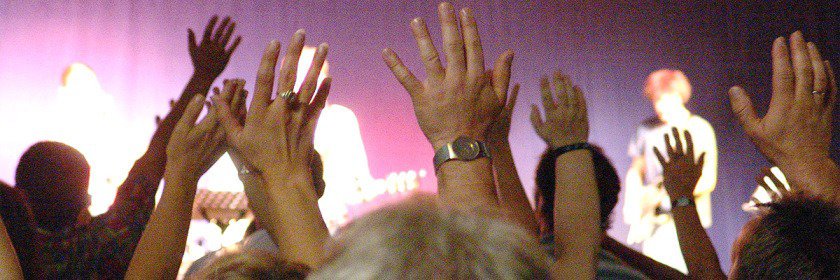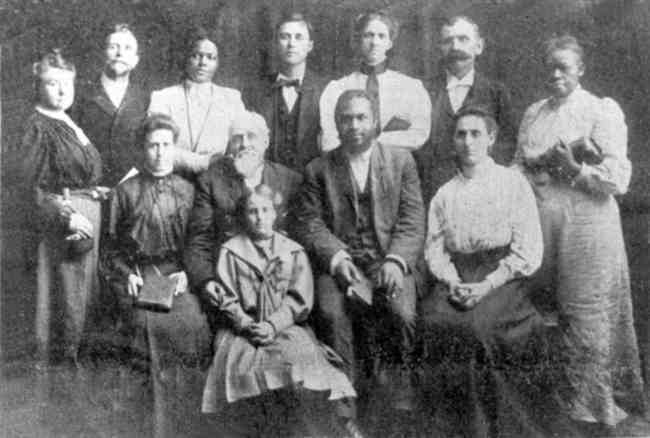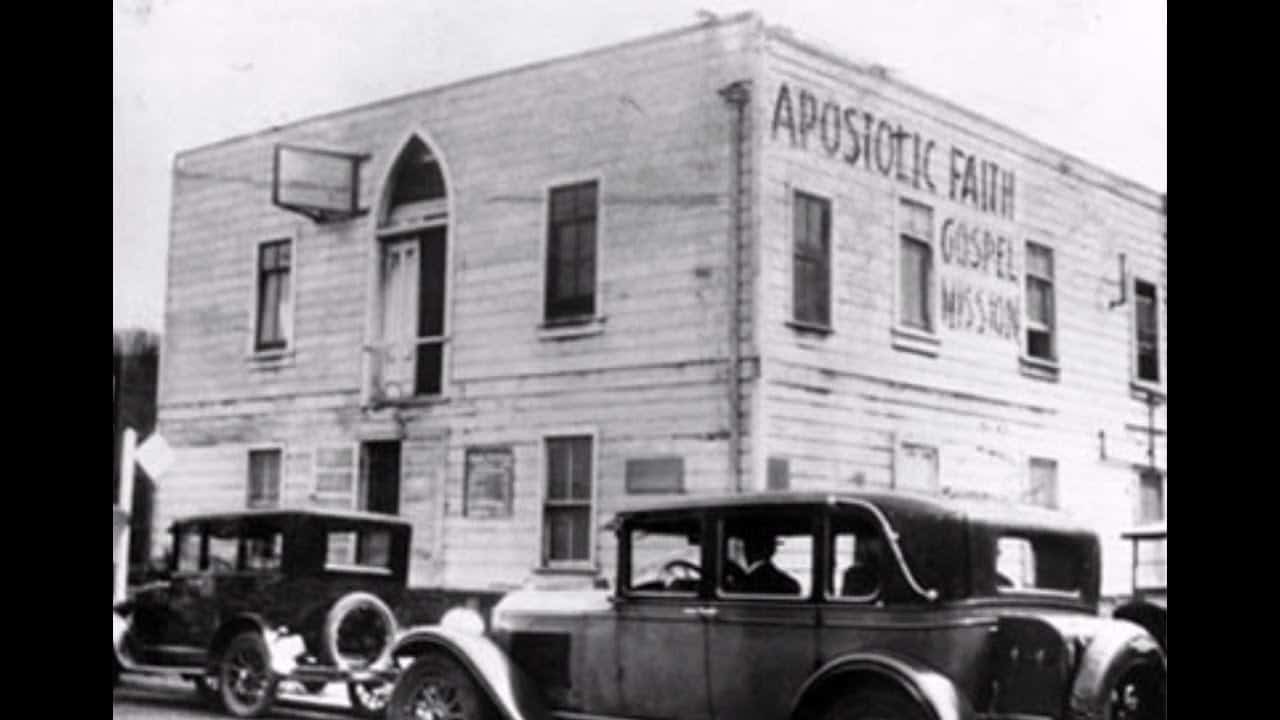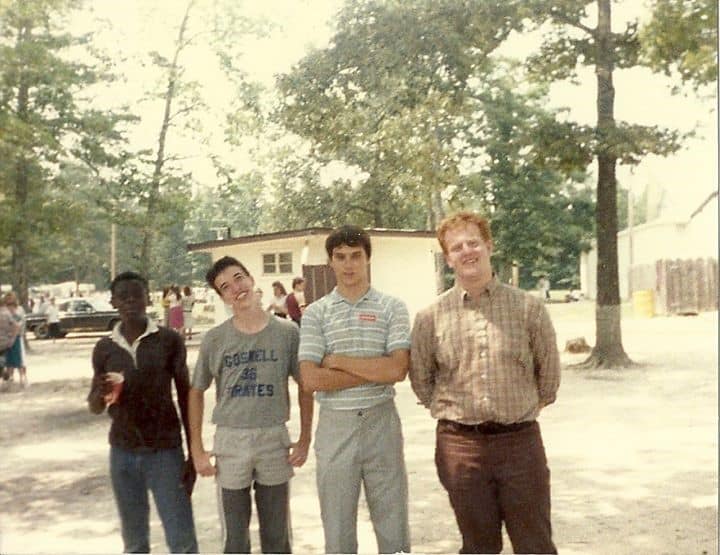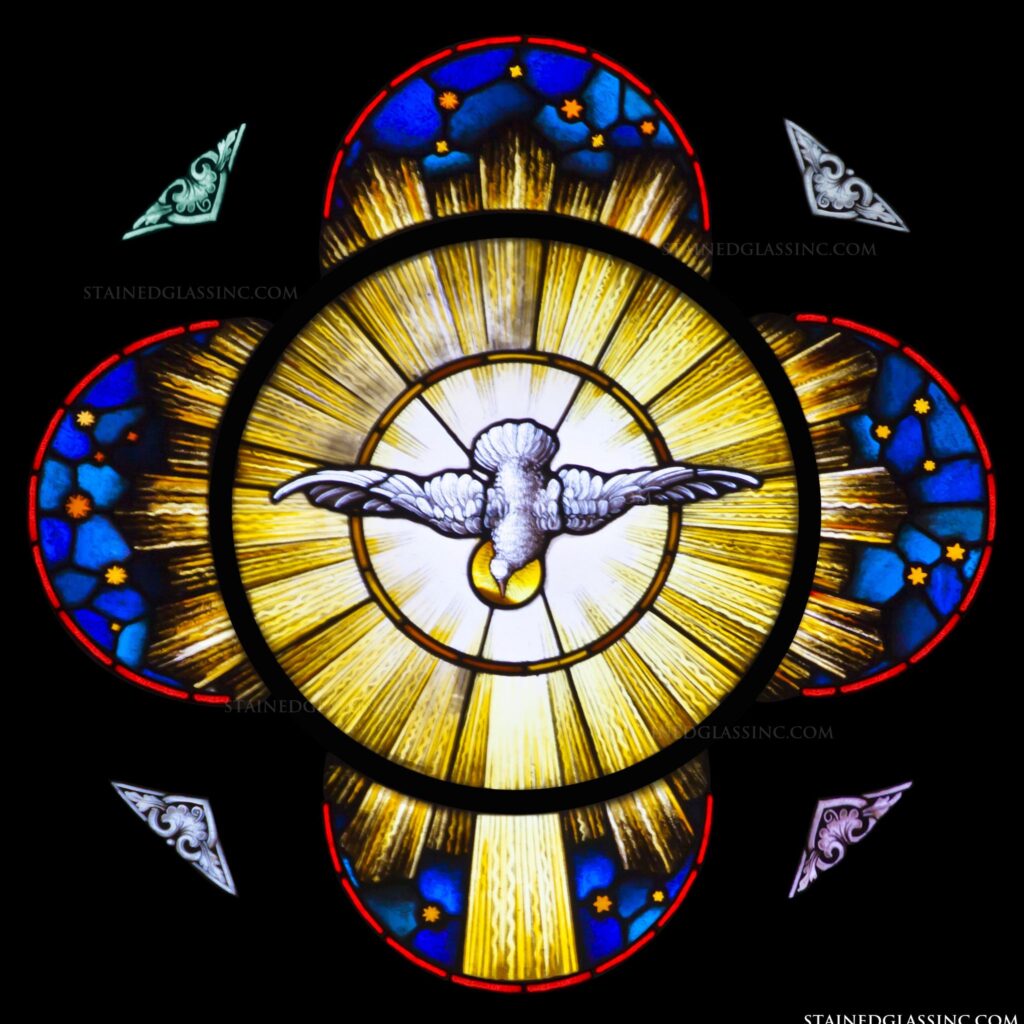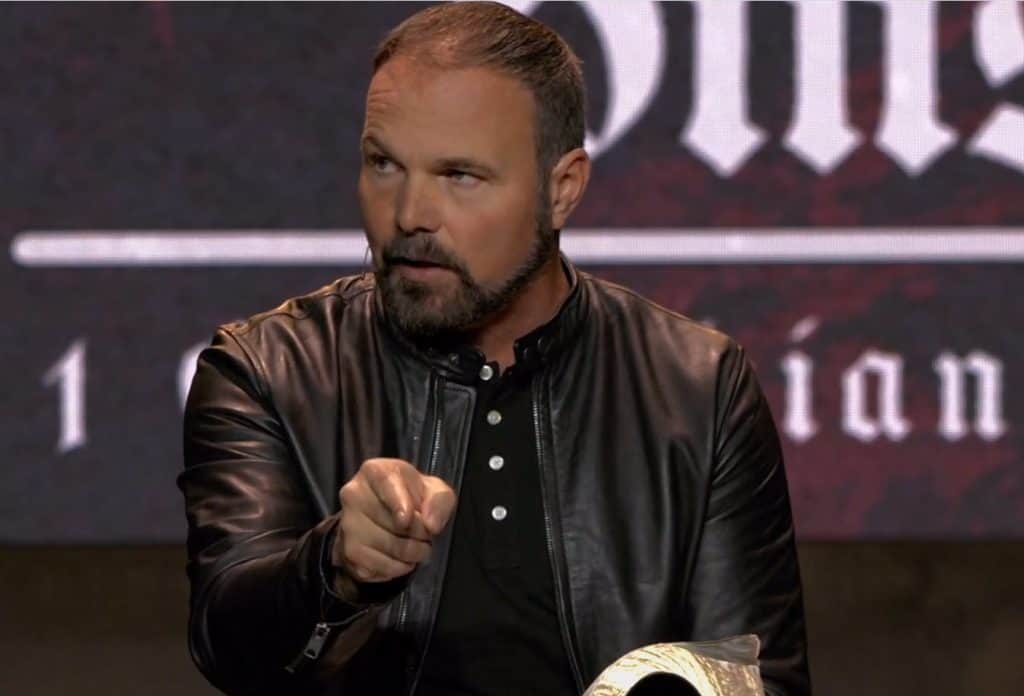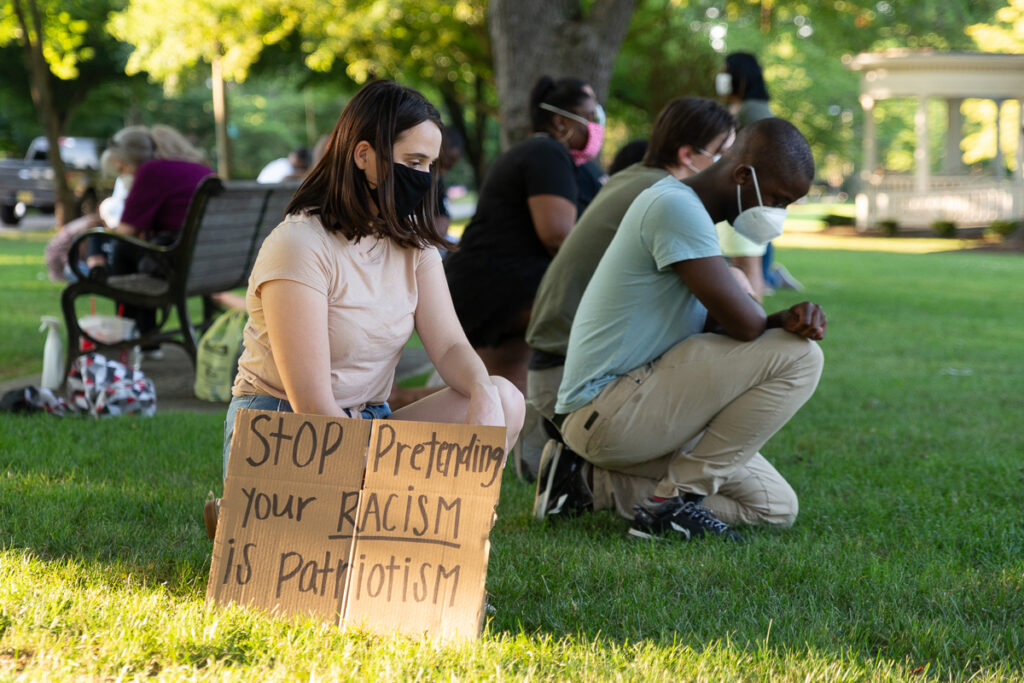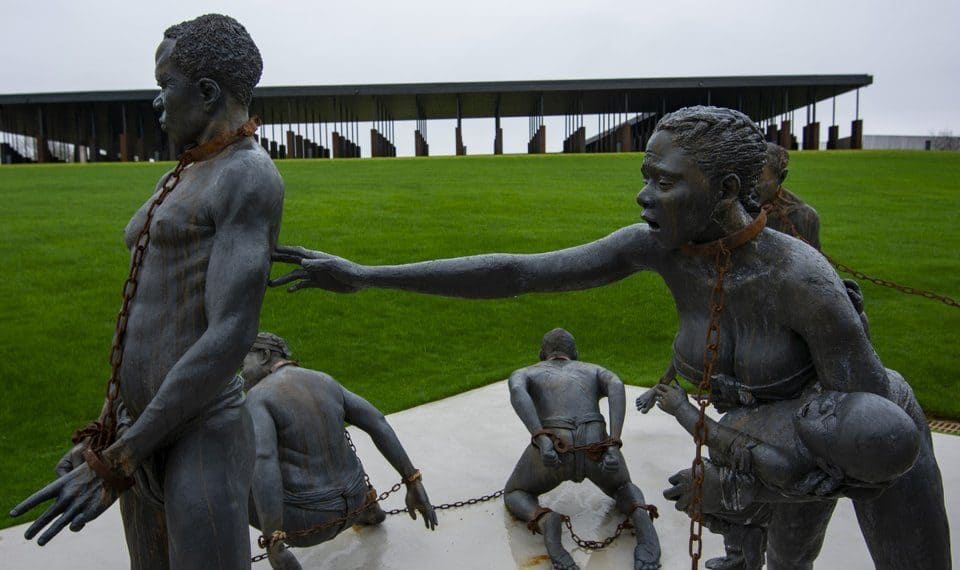Some of my earliest memories are filled with images of Pentecostal worship—from both above and beneath the pews, as I often slept under them during worship services. For most of my life, I’ve enjoyed preferred seating at local expressions of a worldwide spiritual movement known as Pentecostalism. My religious devotion first developed in Northeast Arkansas, in a small rural congregation. My experiences at The First United Pentecostal Church, West Rose, and Maple Streets in Blytheville, Arkansas, served as my primordial religious formation. A soup from which I would eventually emerge with evolved understandings, yet with a loving appreciation of my heritage.
At that church, when I wasn’t sitting on the pew or sleeping under it, I would sometimes sit in my mother’s lap forcing her hands together, clapping them to the beat of a Pentecostal hymnal like I saw the light; never mind that the song was penned by the heathen Hank Williams. I can still hear the songs, the preacher, the shouts, the tongues. When things would get really exciting my grandmother, the matriarch of our family would let out a “battle cry” from the back of the auditorium. It sounded like a train whistle as she would lead the Holy Ghost locomotive down the track. Others would follow. We called it “a victory march.”
White People, Black Worship
We were all very white people, but our worship was black. I don’t mean that we intentionally imitated black worship styles, although in many instances we certainly were doing so. But rather, we did what whiteness most often does; we appropriated worship that wasn’t native to our own inclinations. We did it without thought or premeditation and blamed it on the Holy Ghost. Really, we were just being swept along in a cultural river that we channeled through whiteness. Of course, I didn’t know how white we were then, and how it influenced most every experience around me. It was simply my world. I was unaware of the social status my melanin guaranteed. Equal parts poverty and privilege, growing up in the Mississippi River Delta of Arkansas, I was a hybrid even then. This status wouldn’t be fully understood until much later in life. A status with social and economic implications that is still an unfolding mystery in many aspects. On occasion, now upon reflection, I catch glimpses of this duality that was my experience.
In the Front Pew
For instance, as I got older, it became my habit to occupy the front pew at our church, especially on Sunday evenings. I’m not entirely sure why, perhaps it was certainly more difficult to fall asleep there. But maybe by that point in my life, I had learned that Pentecostal churches can be exceptionally entertaining, especially on Sunday nights, and I didn’t want to miss one moment of the excitement.
On one particular summer Sunday, I had played outside all afternoon. It was hot, dry, and dusty. We must have left for church in a hurry as I had quickly exchanged my summer sneakers for my church shoes, a pair of pointed cowboy boots. I had put them on the wrong feet; my mother hadn’t noticed, and I didn’t care. Arriving at church, I took my spot on the front pew. Church commenced, and there were introductions, prayers, and preliminary announcements. I am sure it was hot, and I’m confident I smelled. I sat on the front pew with the ends of my boots pointing in the opposite direction of my feet.
It is possible that my fashion faux pas would have escaped notice had it not been for a particular habit of our Pastor. Most of the time he would sit on a throne-like chair behind the pulpit. He was visible yet removed, elevated above the people he led. This was the physicality of his authority. He would sit there with his legs crossed wearing see-through socks that looked like the hosiery my grandmother would wear, only shorter, as it crumpled around his ankles. Pastor was distant, high, and lifted up throughout the service until it was time for the choir to sing.
As they marched single file ascending to their place in the choir loft, Pastor would then condescend to the pews. Specifically, the front pew, right next to me. He sat down beside me as the choir assembled. He noticed my shoes were on the wrong feet and proceeded to assist me in correcting my mistake. As he pulled my boots off, my dirty, filthy socks were exposed. The residue of the summer afternoon fun still remained in the bottom of my boots. Some dirt spilled out onto the carpet. The carpet was red, just like my face. The choir began to sing through their smiles at my embarrassed expense. The Pastor laughed. I managed to clap my hands, the ends of my boots now pointing in the proper direction. I still recall my embarrassment, and a shame enveloped me at that moment. As the choir continued to sing and sway with joy, I was fully conscious that my socks were dirty, and everyone knew this. In that moment, I was aware that I did not fit in, and that I had transgressed the unspoken expectation that one should wear clean socks to church, along with other good hygiene habits. And although the Pastor, the choir, and those in the congregation who had witnessed my embarrassment, intended no malice toward me, it was forever branded in my memory. But because I was a white boy, I was welcomed back. My transgression was forgiven. Worship continued. Preaching commenced. Life went on.
What has Arkansas to do with Azusa?
As I grew up in this Pentecostal church, it would become obvious to me that my black and brown brothers and sisters in Christ would not enjoy such gracious dispensations when in the rare moments they attended our church, they unintentionally transgressed the unspoken expectations of the white normative culture.
The Pentecostal worship tradition and experience have a long and interesting history in America. At times, it hearkens back to its inspiration in Acts chapter two, but at other times surrenders to the sad realities of racism that still asserts its supremacy. The early church father Tertullian famously asked “What has Athens to do with Jerusalem?” by which he meant “What has Greek thought and philosophy to do with Christianity and its biblical heritage?” This is an example of how place competes for prominence and influence in religion and philosophy. Tertullian’s question may also be applied to any number of places and influences in my personal journey, but specifically resonates as I contemplate the influence of an early twentieth-century revival movement. I grew up in Northeast Arkansas, but it was two thousand miles to the west and about one hundred years in the past, at 312 Azusa Street, Los Angeles, California, that profoundly shaped my personal experience of a religious phenomenon known as Pentecost. So, to channel Tertullian, “What has Arkansas to do with Azusa?” As it turns out, quite a bit.
Azusa Street Revival
Place sometimes provides origins, and sometimes it serves to cultivate a germinated seed providing a nursery for growth and development. Such is the case for the 1906 Azusa Street Mission revival which provided fertile soil for the fledgling Pentecostal movement to blossom into a worldwide phenomenon that would forever alter the religious world. The Azusa Street Mission revival was led by a black preacher, the son of Louisiana slaves, William J. Seymour. Seymour led an integrated movement at the peak of Jim Crow culture in America. The revival would last for three years at maximum popularity before the institutionalized expectations of white normative culture would reassert themselves.
The British Pentecostal scholar, Alexander A. Boddy points out,
“It was something very extraordinary, the white pastors from the South were eagerly prepared to go to Los Angeles to the Negroes, to have fellowship with them and to receive through their prayers and intercessions the blessings of the Spirit. And it was still more wonderful that these white pastors went back to the South and reported to the members of their congregations that they had been together with Negroes, that they had prayed in one Spirit and received the same blessings as they.”
Indeed, the blurred “color line” at Azusa was a defining characteristic of Pentecostalism that would not last. The enthusiastic embracing of people of color initially present at Azusa Street was not present in my church growing up.
Racial Divide in Northeast Arkansas
Although the city of Blytheville was predominately African-American, my Pentecostal church experience reinforced the residuals of a segregated South. Black people, although not turned away if they came to our church, were not genuinely welcomed by all. My mother, who was responsible for taking me to that small Pentecostal church would say it like this, “There were no black people in the Pentecostal church at Blytheville, although they were always welcome.” The point remains. I only remember seeing a few black people in our church on special occasions, and even then, it seemed to be somewhat understood, that although they were never turned away, they would not be treated as equals. Some qualities of The Azusa Street revival never made it to Northeast Arkansas. And even though evangelistic outreach was encouraged it was understood that the racial divide would not be bridged. The enthusiasm for the Pentecostal message did not include references to the first messengers of color, nor did it attempt to pass that message forward to those like them with any sincere efforts.
The Fire of Azusa
At Azusa, there was a “hot” experience that was carried on the shoulders of those first adherents to every corner of the globe and transferred to future generations. As Frank Bartleman, an eyewitness to the events of Azusa explains, “Brother Seymour was there, in charge. The ‘Ark of God’ moved off slowly, but surely, at Azusa. It was carried ‘on the shoulders of His own appointed priests in the beginning. We had no ‘new cart’ in those days to please the carnal, mixed multitude…the priests were ‘alive unto God,’ through much preparation and prayer.”
This preparation and prayer that perpetuated the Pentecostal experience globally did not go unnoticed in a Los Angeles Times report, as recounted by Randall J. Stephens in The Fire Spreads:
“Soon after the revival began in April 1906, the interracial, multiethnic gathering attracted the attention of reporters, who lampooned the congregants for their wild religious excesses. The spiritual acrobatics performed at the Azusa Mission—jumping, dancing, falling prostrate on the floor, shouting, speaking in tongues, and prophesying—made the participants easy targets of ridicule. One reporter mocked the meeting as a ‘Weird Babel of Tongues’ and mercilessly caricatured Seymour: ‘an old colored exhort, blind in one eye, is the major-domo of the company. With his stony optic fixed on some luckless unbeliever, the old man yells his defiance and challenges an answer.’”
The fire of Azusa served as a proverbial campfire, around which generations of people would find spiritual heat and light. Reflecting upon my experiences at the Pentecostal Church in Blytheville, Arkansas has inspired further explorations of my personal and family heritage. What emerges is an understanding that people I have never met who gathered long ago at a place I have never visited served to profoundly shape my life.
The Fruit of Azusa
Although I have never visited the site of The Azusa Street Mission, it is hard to imagine what my life would be without its influence. This sense of place provides an intangible legacy in my life. I was not there to witness William Seymour proclaim his Pentecostal sermons, but I heard the themes repeated at my church on West Rose and Maple. I did not witness the shouting, jumping, and exuberant worship services at Azusa Street, but I was there when the fire of Pentecost “fell from heaven” on my pew growing up. I did not personally witness the all-night prayer meetings and twenty-four-hour service schedule that continued uninterrupted for three years at 312 Azusa in Los Angeles, but my knees did grow sore and my legs stiff kneeling beside my grandmother in her home, and beside the countless Saints who occupied the pews of my Pentecostal church.
Legacy is not defined by where a seed is planted, but by the fruit it produces. The Pentecostal movement did not begin in Northeast Arkansas, but its fruit was eaten there. I ate it, shared it, and passed it on to others as it had been passed on to me. And the seeds of the fruit of Azusa Street continue to germinate all over the world. In my experience and memory, like a branch to a vine, Azusa and Arkansas will forever be connected, continuing to produce a harvest of personal religious piety.
The fruit of Azusa was genetically modified over time to reflect the white supremacy that dominates our culture. Not the variety of white supremacy that wears robes and pointed hats, but the supremacy that rewards proximity to white behavior and normative culture. The enthusiasm exhibited by the black leaders at Azusa would become identical to the emotion I saw on display in my small Pentecostal church in Arkansas, and would be tamed in its white-washed expressions. The distinguishing difference between Azusa Street and my Arkansas was the notable absence of black and brown bodies worshiping along beside us, and certainly never exhibiting real leadership from behind the pulpit. In my formative experiences, the fruit of our Pentecostal worship was, to our shame, primarily of one homogenized variety and absent of color. We were the religious white.
This essay is from our Anastasis Series where we resurrect articles from the past that are either still relevant today. This piece was first published on January 16, 2020, and has been lightly edited and updated.

